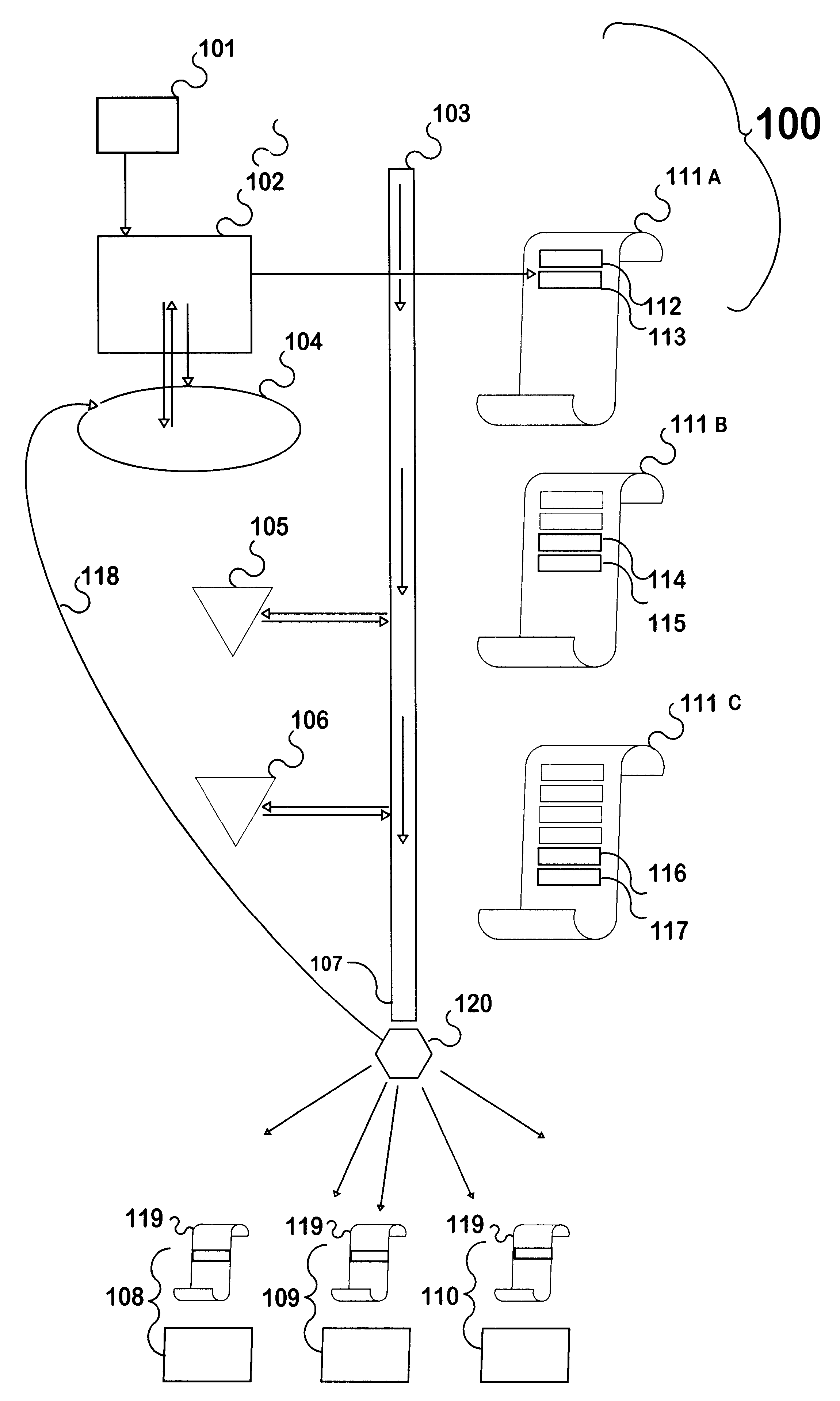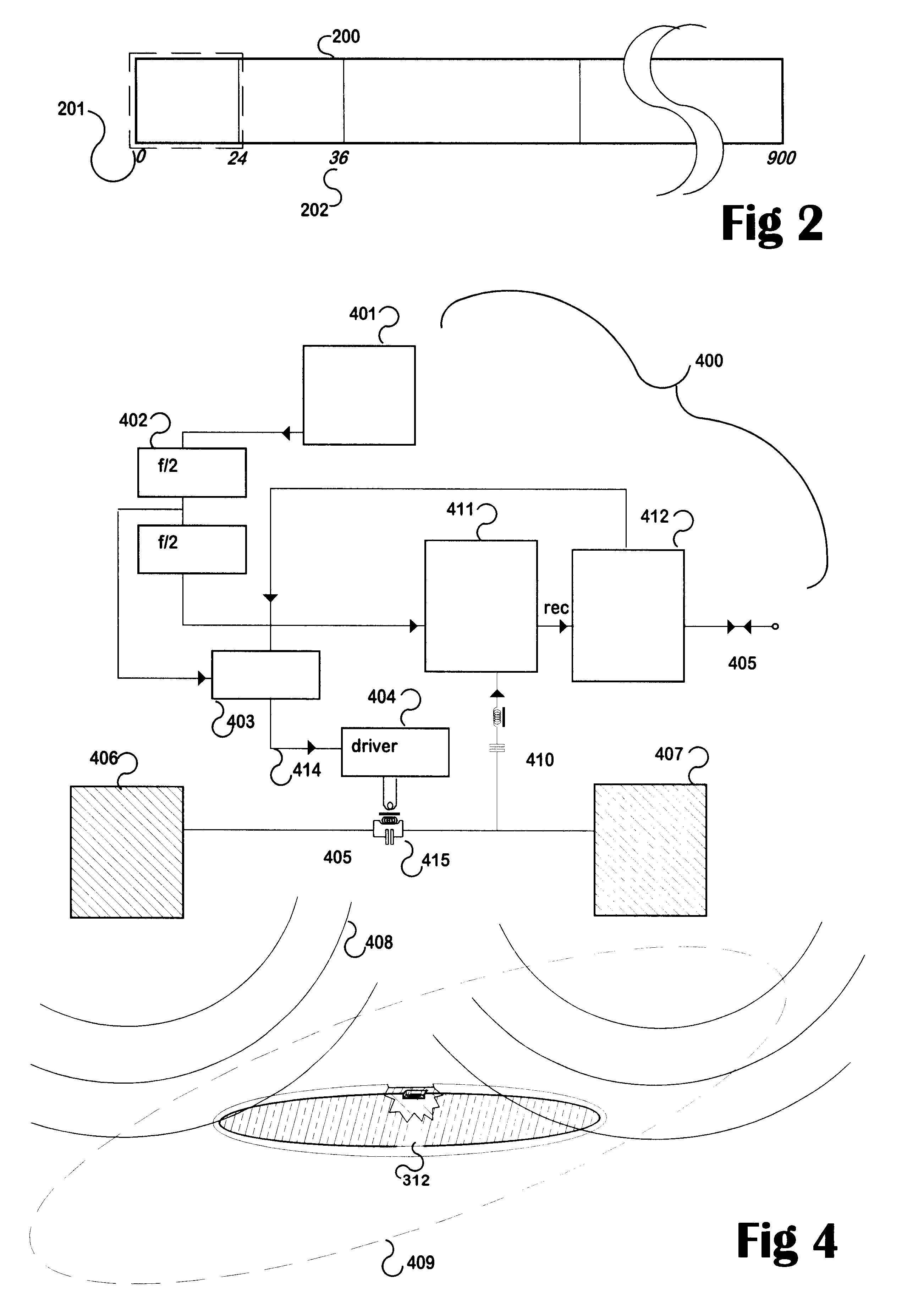Terminal for an active labelling system
a labelling system and terminal technology, applied in the field of terminals for active labelling systems, can solve the problems of limited number of separate records, propensity of eartags to be lost, and administrative problems in the management of such records, and achieve the effect of increasing the density of information packing
- Summary
- Abstract
- Description
- Claims
- Application Information
AI Technical Summary
Benefits of technology
Problems solved by technology
Method used
Image
Examples
example 1
Transponder Example 1
An initial "proof of concept" for this invention was to employ the "Motorola" BISTATIX(R) technology. A bare silicon chip is attached to a conductive substrate that forms an electrostatically coupled aerial. This active device includes receiver means, internal power supply means, storage means, and transmitter means. A prototype aerial intended for use on packages or the like is in the shape of butterfly wings of printed, conductive ink having an overall area of 80.times.45 mm, with the chip glued in the correct orientation at a position between each of the wings--corresponding to a butterfly's body. FIG. 3 shows this at 300; with the chip 301 connected and attached across two conductive areas 302, 303 upon a substrate 304. At the time of writing, no technical information has been made available by Motorola other than the operating frequency and the existence of an approximately 900 bit memory space. The preferred transmission frequency to send information to, a...
example 2
Transponder Example 2
The currently preferred device is a Texas Instruments "Tag-it".TM. chip and assembly, manufactured together with a pickup (160 kHz) and return (80 kHz) aerial coil and encapsulated within glass. Thus the capsule is inert and easily sterilisable, preferably with a liquid disinfectant that can also be used with the injection device. The chip includes means to employ some of the received energy as internal power. The chip also includes memory; currently 1.2 Kbits which is organised to be partly "permanent" or write-once memory and partly memory capable of being written to on a number of occasions. Furthermore, software protection provides that different levels of user's priority allow access to more or less of the memory. The current memory size is rather small and encryption and compression are used, with the terminal translating between human-readable information and the stored version. Nevertheless, the stored data can include the last ten veterinary treatments....
PUM
 Login to View More
Login to View More Abstract
Description
Claims
Application Information
 Login to View More
Login to View More - R&D
- Intellectual Property
- Life Sciences
- Materials
- Tech Scout
- Unparalleled Data Quality
- Higher Quality Content
- 60% Fewer Hallucinations
Browse by: Latest US Patents, China's latest patents, Technical Efficacy Thesaurus, Application Domain, Technology Topic, Popular Technical Reports.
© 2025 PatSnap. All rights reserved.Legal|Privacy policy|Modern Slavery Act Transparency Statement|Sitemap|About US| Contact US: help@patsnap.com



